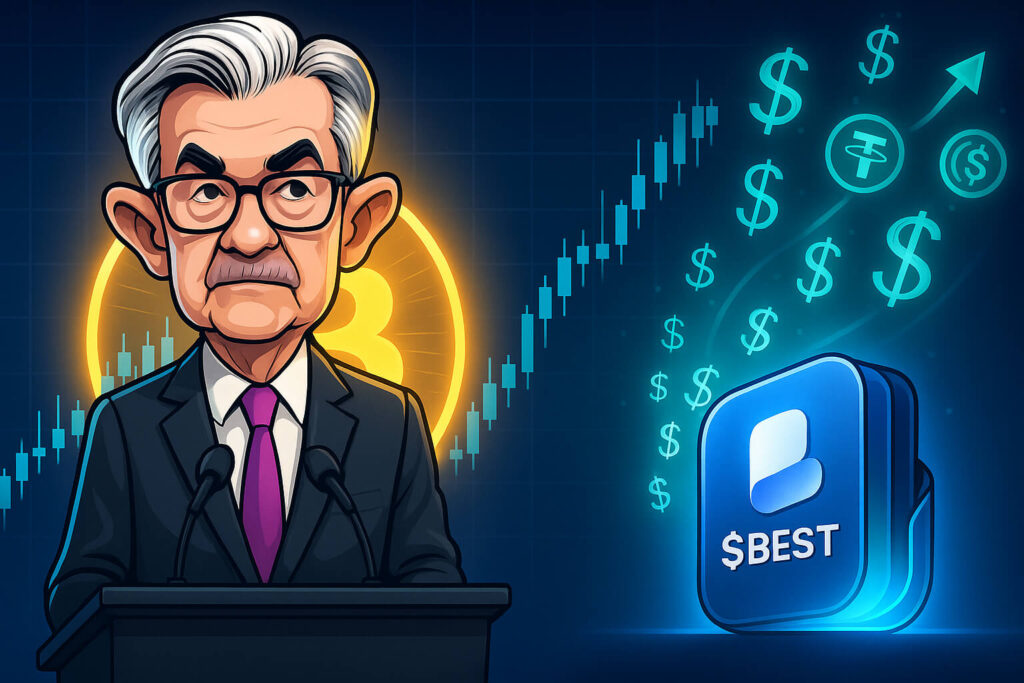Navigating the intricate world of cryptocurrencies requires understanding the market’s changing landscape and being prepared for potential fluctuations. As the final week of October approaches, many in the financial sphere have their eyes set on significant events that could impact the crypto market. The anticipated decisions from the Federal Reserve, key political engagements, and the unveiling of crucial tech earnings are all factors that can introduce volatility and open doors to potential gains. Let’s dive deeper into these elements that could shape this pivotal week for cryptocurrency enthusiasts.
Crypto Market Poised for Major Shifts: What to Expect
- 1️⃣ The Federal Reserve’s anticipated rate cut, combined with a low Stablecoin Supply Ratio, signals increasing liquidity and investor optimism in the crypto space.
- 2️⃣ A dovish tone from Powell might unlock new capital for high-risk assets, potentially spurring an ‘Uptober’ rally.
- 3️⃣ In the post-FTX era, the demand for self-custody solutions is rising, increasing interest in wallet-based ecosystems like Best Wallet.
- 4️⃣ The $BEST token has already raised over $16.69M, showing strong adoption indications ahead of its official release.
The upcoming decisions by the Federal Reserve and other geopolitical factors could be the catalysts for the much-anticipated ‘Uptober’ breakout in the cryptocurrency market. Speculation is rife, with platforms like Finances Zippy suggesting a high probability of a 25-basis-point rate cut midweek, which would bring benchmark rates to their lowest point since 2022.
The Role of Stablecoin Supply Ratio in Predicting Market Trends
The Stablecoin Supply Ratio (SSR) is an essential metric to gauge underlying market confidence. This ratio compares the total stablecoin supply to Bitcoin’s market cap. A declining SSR indicates an increasing amount of stablecoins is available for redeployment into the market, suggesting a readiness for investment retraction. As per Glassnode’s recent data, the SSR is nearing its cycle lows, hinting at potential for a market uptrend driven by fresh capital infusion.
Why Wallet-Based Ecosystems Are Gaining Traction
The aftermath of FTX has shifted investor focus towards self-custody and transparency. This paradigm shift is causing traders to prioritize on-chain assets, favoring decentralized wallet ecosystems over centralized exchanges. As Fed rate policies and stablecoin availability encourage liquidity influx, platforms merging safety with yield opportunities become attractive.
What Makes Best Wallet and $BEST Token Attractive?
The Best Wallet ecosystem is positioned as the next-generation self-custody solution, combining accessibility, yield opportunities, and practical utility. Utilizing Fireblocks’ MPC-CMP infrastructure, Best Wallet offers institutional-grade security, appealing to both individual and institutional investors. The ecosystem is rapidly growing, reflecting substantial user engagement.
At the heart of Best Wallet is its token, $BEST, which provides benefits such as reduced transaction fees, early crypto presale access, governance rights, and lucrative staking rewards. With over $16.69M raised in the presale, interest is high ahead of its formal release. Predictions suggest a price surge to $0.62 by 2026 if current momentum continues.
Exploring the Potential of the Best Card
Beyond its wallet functionalities, Best Wallet extends its utility with the Best Card — a crypto debit card enabling real-world spending, cashback, and reduced fees for $BEST holders. By bridging decentralized finance (DeFi) yield and everyday transactions, the Best Card represents a seamless integration of crypto into daily financial activities, aiming to capture a broader retail audience.
This guide provides a comprehensive exploration of the evolving cryptocurrency market landscape, examining the influence of macroeconomic factors and emerging technologies. Understanding these dynamics will empower investors to make well-informed decisions.
Is Fantom (FTM) a good long-term investment?
Fantom (FTM) is recognized for its scalability and minimal transaction fees, attributes that have attracted investors seeking efficient blockchain solutions. However, potential investors should evaluate market dynamics, technological advancements, and competitive metrics before committing to a long-term investment strategy.
What is the significance of the Federal Reserve’s rate decisions on cryptocurrencies?
The Federal Reserve’s rate decisions significantly affect the cryptocurrency market by influencing liquidity. Lower rates typically reduce capital costs, encouraging investments in high-risk assets like cryptocurrencies, potentially driving their prices upward.
How does the Stablecoin Supply Ratio serve as a market indicator?
The Stablecoin Supply Ratio (SSR) acts as a market sentiment indicator, showing the balance between stablecoin reserves and Bitcoin’s market cap. A low SSR suggests ample stablecoins are available, possibly leading to increased crypto investments when market conditions improve.
This detailed guide delves into the nuances of the cryptocurrency landscape, offering insights into market behaviors influenced by economic indicators and technological developments, thereby aiding investors in making prudent, informed decisions.

